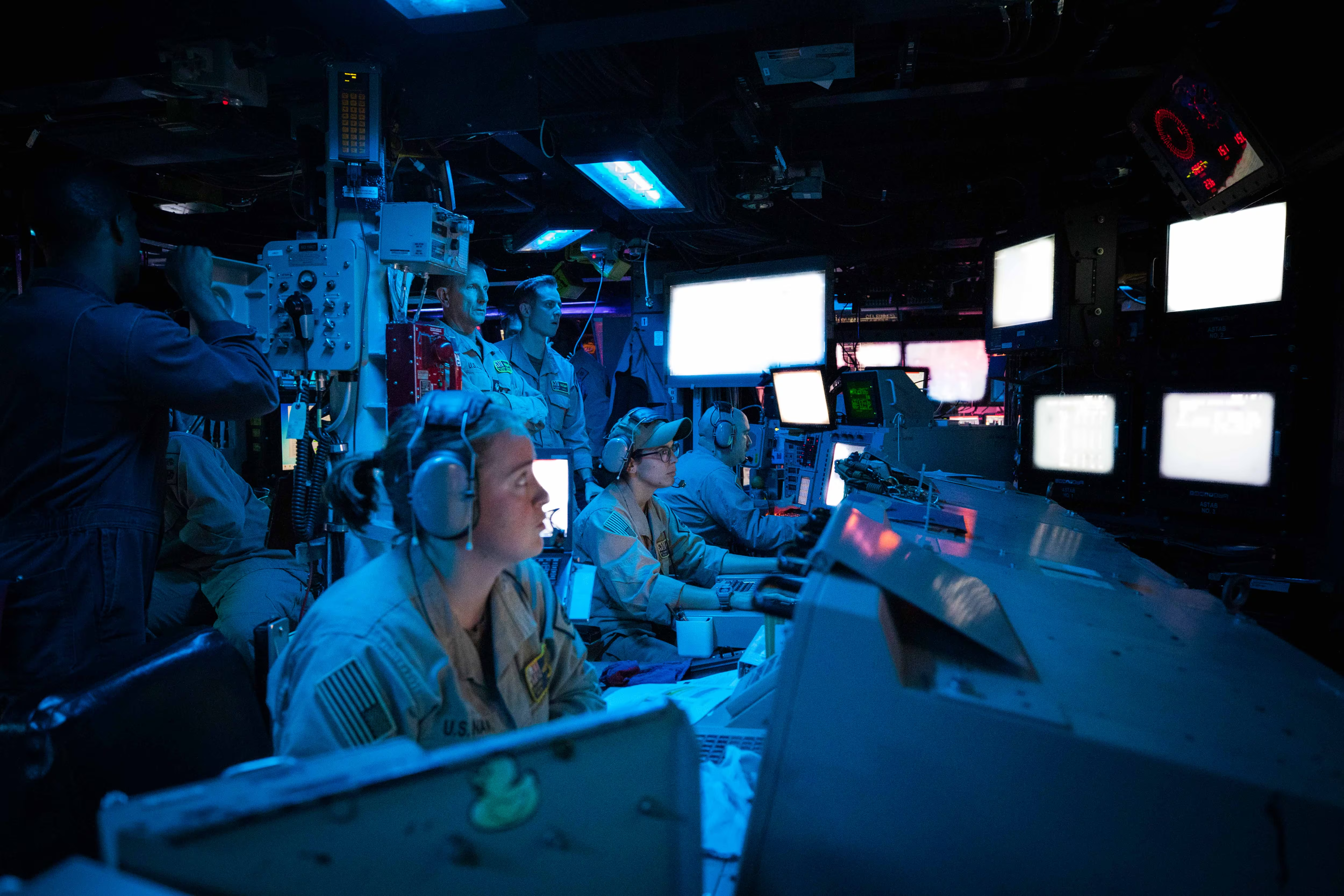U.S. military leaders had hoped to devote fewer resources to the Middle East in favor of countering China’s advancements and helping Ukraine battle Russia.
But that calculus changed on Oct. 7, when the Palestinian militant group Hamas flooded into Israel, killing around 1,200 people and kidnapping hundreds more. The surprise attack sparked a bloody war in the Gaza Strip that has left thousands of Palestinians dead.
Once again, the Middle East is at the forefront for the Pentagon. And once again, a Navy armada is patrolling the waters of U.S. Central Command.
This fall, multiple Navy destroyers have found themselves countering incoming attack drones in the Red Sea, as the ships fight to keep the vital economic sea lane navigable for commercial vessels. In one instance, the warship Carney spent nine hours shooting down a barrage of missiles and air drones fired toward Israel from Iran-backed, rebel-held areas in Yemen over a single day in October.
In another, the ship shot down a swarm of 14 attack drones in one encounter in December.
U.S. crews have also been dispatched to aid commercial ships struck by missiles.
A multinational task force has been stood up to help keep the Red Sea secure for commercial ships, a mission in which U.S. forces will almost certainly play a key role. Patrolling the region and fending off additional attacks will likely keep Navy ships busy in 2024.
“We … have every reason to believe that these attacks, while launched by the Houthis in Yemen, are fully enabled by Iran,” CENTCOM said Dec. 3, when Carney shot down three drones and responded to multiple commercial ships that were struck by missiles. “The United States will consider all appropriate responses in full coordination with its international allies and partners.”
Geoff is the managing editor of Military Times, but he still loves writing stories. He covered Iraq and Afghanistan extensively and was a reporter at the Chicago Tribune. He welcomes any and all kinds of tips at geoffz@militarytimes.com.





